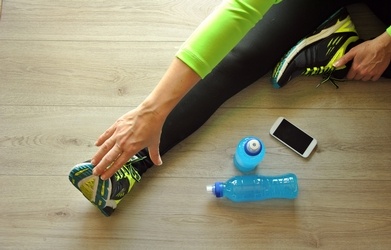Physical fitness is important for everyone, regardless of age, gender, or overall health. However, for those who have diabetes, remaining fit through regular activity is especially important. Not only can doing so provide the normal benefits of weight management and strengthening the cardiovascular system, it can also help the body deal with diabetes more efficiently, lowering blood glucose levels and improving your A1C.
Of course, not everyone is accustomed to regular exercising, and adding a condition such as diabetes can increase the risk of some safety hazards. In order to reap the full benefits of physical activity while also avoiding harm or injury, follow these tips:
Talk to Your Doctor before Exercising
The most important step you can take before beginning any new exercise regimen is to first discuss the program with your physician. Based on your medical history and current level of fitness, he or she can make suggestions as to the types of exercise you should begin with, as well as offer any restrictions by which you should abide.
Keep a Source of Carbohydrates Nearby While Exercising
In the event of low blood glucose levels, it is important that diabetics have a source of carbohydrates nearby at all times. Sports drinks can be a good source, but high sugar content could also lead to blood glucose spikes. Be mindful of the nutrition facts, and water down the drink if necessary.
Wear a Medical Identification Bracelet While Exercising
Wearing a medical identification bracelet or necklace that identifies your diabetic condition while working out can give bystanders and medical personnel important and time-saving information in the event of a medical emergency. If you prefer to exercise alone, carry a phone with you at all times, and let a loved one know where you will be and when you expect to return.
Take Care of Your Feet While Exercising
Poor circulation and slow wound healing make injuries to the lower extremities particularly problematic for diabetic patients. For this reason, it is crucial to take good care of the feet during and following any physical activity. Where clean, well-fitting socks and shoes. Invest in insoles that will reduce pressure and socks that wick away moisture. And, carefully inspect your feet afterward for blisters or other signs of irritation.
There may be some things that diabetes prevents you from doing, like indulging in the desserts you once loved, but it shouldn’t prevent you from maintaining a good level of physical fitness. In fact, it’s a great reason to begin an exercise program if you haven’t already. Your body stands to benefit greatly, but it’s important to remember the unique circumstances that come with being diabetic and to prepare ahead of time.
If you have been diagnosed with diabetes and would like help and guidance in living your healthiest life possible, contact the Lane Regional Medical Center Diabetes Management Program and request additional information.
Sherri Brady, RN, CPE, CDE
Diabetes Nurse Educator
(225) 658-4583



.png?width=110&height=110&name=lane%20badge%20(1).png)
